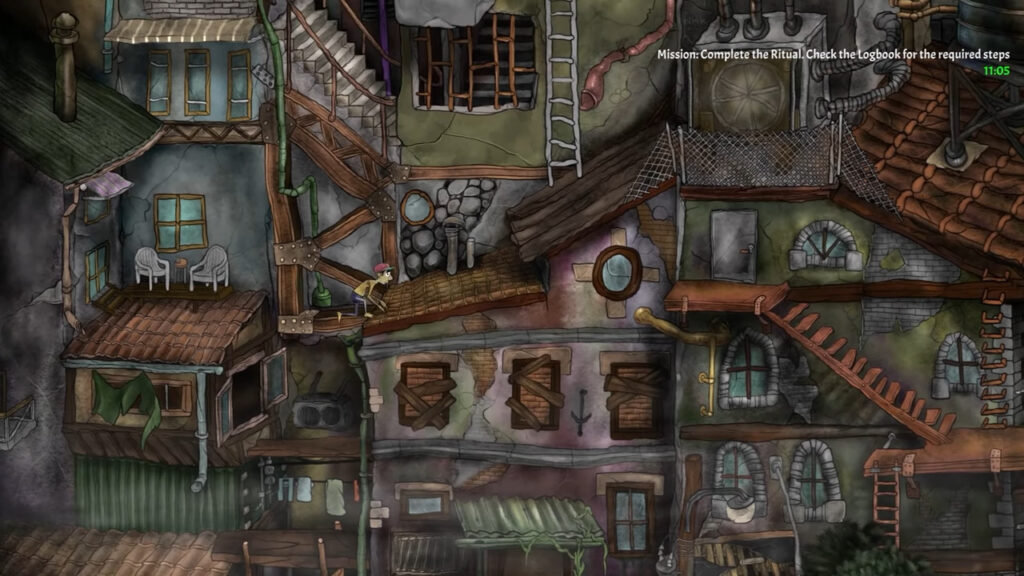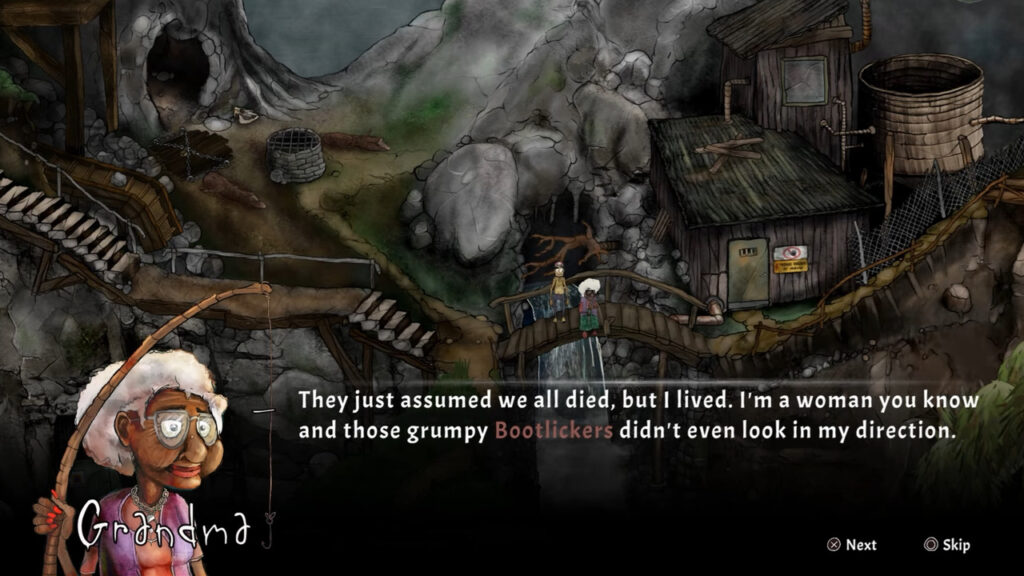
Developer: Woodhill Interactive
Publisher: Woodhill Interactive
Platform: PC, Switch, Xbox One, Xbox Series X|S, PS4, PS5
Tested on: Switch
Orten Was the Case – Review
You wouldn’t say it based on key art or screenshots, but Orten Was the Case was created by the lead animator of the award-winning It Takes Two, as there is quite a bit of contrast between both games’ visuals. From what we gather, Orten Was the Case was based on a painting that this one-man indie developer, Oskar Thuresson, made in 2015. As such, it stands to reason to assume that the game was a bit of a passion project, spending eight years inside Thuresson’s mind before it was unleashed on the unsuspecting public. We didn’t know what to expect when we booted up Orten Was the Case for the first time, and in all honesty, we’re still not quite sure how to explain it without giving half the game away, but we’ll sure as hell give it a try.
Story
The titular Orten is a fictional suburb in Sweden. A cryptic opening scene shows that 5000 years prior to the events in the game, this unassuming location was the subject of a prophecy made by a mysterious cult. Said prophecy involves a massive explosion that blows up Orten, with our protagonist Ziggy being the only one able to stop it. Unfortunately for Orten’s inhabitants, Ziggy is a bit of a low-life loser who is completely unaware of the part he is about to play. On the first day of Orten Was the Case, Ziggy goes about his life, but suddenly the explosion happens, and our hero blacks out. When he wakes up, it’s the very same lazy Sunday again… except this time, he has a strange mark on his hand. What does it mean? And can Ziggy save the town? We won’t spoil what happens next, but rest assured that Orten Was the Case delivers a tale full of twists, turns, and interesting characters.
Graphics
Perhaps the most divisive part of Orten Was the Case is the graffiti-inspired art style. We understand that aesthetics are a matter of personal preference, but the grotesque character designs didn’t seem all that appealing to us. The environments are filled with details and perspective is often skewed. While the sheer amount of detail is admirable, it does make things difficult to read at a glance. The color palette isn’t all that pleasing either, with the suburb of Orten itself a bleak mess of greys and browns, and character skin tones ranging from sickly green to pale yellow. Animations are surprisingly fluid, as the characters are actually rendered as 3D models juxtaposed against a 2D background, but that doesn’t really help in making the game more beautiful.
Sound
The soundscape takes on a decidedly more minimalist approach. At the risk of sounding offensive: characters do talk, but our knowledge of Swedish is non-existent, so we’re not sure whether they are speaking gibberish or are actually using Swedish words. Either way, the cast doesn’t quite enunciate their words, and the dialogue sounds more like mumbling than anything else. The music feels equally subdued, and the sound effects aren’t anything special either, resulting in a soundscape that stands in stark contrast with Orten Was the Case’s busy visuals.
Gameplay
We usually give a spoiler warning when talking about a game’s story, but here the spoiler warning actually applies to the gameplay instead. That might sound strange, but it has everything to do with the way the game is structured around time loops. As you play through the same time loop over and over, you’ll gain new insights and knowledge. In theory, you could easily complete Orten Was the Case in roughly 15 minutes, because you have all the necessary tools at your disposal to prevent the explosion that destroys the titular suburb. Before you can do this, however, you need to figure out how to use them, which means relying on trial and error. This approach, coupled with the gameplay mechanics, makes for quite a unique experience. But before we get ahead of ourselves about what makes Orten Was the Case such a special game, we should explain what those mechanics entail.
At its core, Orten Was the Case is a point-and-click adventure game, with some light platforming and microgames implemented. However, the game centers around that 17-minute time loop, at the end of which the explosion happens and Ziggy wakes up again, having lost all of his items. This means that the game cannot rely on lengthy inventory-based puzzle mechanics; something that is typically a staple of the genre. Instead, you’ll have to focus on different parts of the game throughout each run, in the knowledge that you won’t be able to save Orten. However, with each attempt, you’ll pry loose more information about how to beat the game. Orten Was the Case is a game that you’ll need to play over and over again, and since everyone is going to take this one on in different ways, there is very little point in looking up a guide, as you’ll only end up spoiling the game for yourself. Fortunately, this reliance on repetition doesn’t grow stale, as there are plenty of things to experiment with, as you figure out how you can make things play out differently.
There are a couple of handy mechanics that make Ziggy’s life significantly easier. The main one is a handy notebook that keeps track of the timeline and events that you encounter. Knowing the exact moment when something happens means you can anticipate these events and act accordingly. Another handy yet unexpected tool is the inclusion of checkpoints as rewards for solving puzzles. Given the game’s structure around a time loop, these come in incredibly handy as they prevent you from having to perform specific tasks over and over. Having sneakers, for example, is extremely handy as it prevents our hero from taking falling damage, but earning those sneakers means playing a mini-game where you need to throw a basketball through a hoop three times. Being able to skip this saves time and prevents frustration. Not that Orten Was the Case is a very long game in the first place… or at least it isn’t, provided you know what you are doing. It took us roughly six hours to “finish” what the game had to offer, but your mileage may vary in this regard.
Conclusion
Although Orten Was the Case didn’t appeal to us from an aesthetic standpoint, the unique take on classic point-and-click gameplay made up for quite a bit of that. The time loop mechanic allows for a non-linear experience that will be unique for each player, even though every player will be working towards the same goal. This does make it difficult to talk about the game without spoiling specific mechanics, and the amount of time you’ll actually spend playing the game will indefinitely vary. As such, Orten Was the Case is a difficult game to assess accurately, even in terms of bang for your buck. This isn’t a title that we’ll outright label as a ‘must-play’ game but it’s at least interesting enough to give it a chance if it sounds like your cup of tea.









No Comments